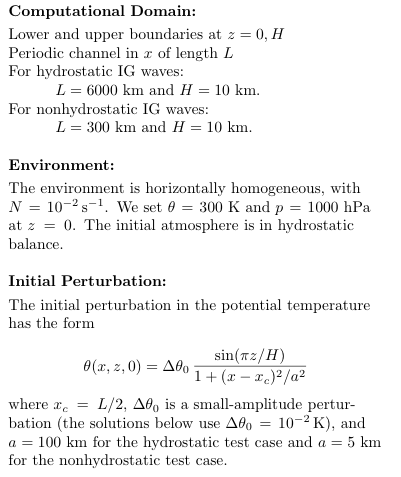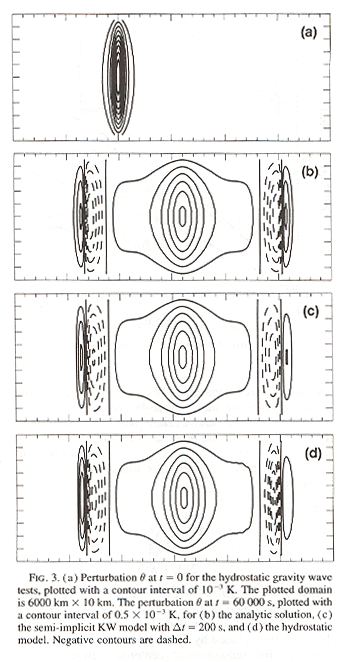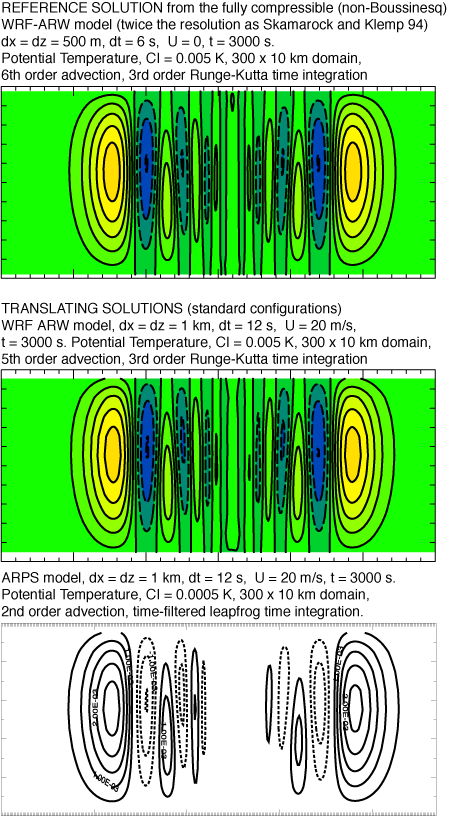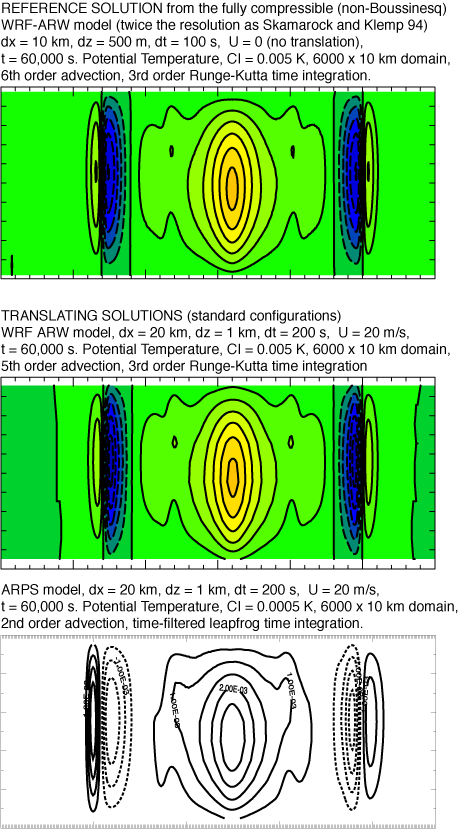
Note: for the hydrostatic test
case, the Coriolis parameter f = 10**(-4)/s (this information is
missing from the paper).
________________________________________________________
Solutions from the Boussinesq model
(from Skamarock and Klemp 1994)
________________________________________________________
Mean wind U = 20 m/s, 3000 second result for the nonhydrostatic IG waves.

________________________________________________________
Mean wind U = 20 m/s, 60,000 second result for the
hydrostatic IG
waves.

________________________________________________________
________________________________________________________
Solutions from the WRF-ARW model (http://wrf-model.org) and the ARPS
model (http://www.caps.ou.edu/ARPS; from the Users' Guide).
Reference solutions (using no mean horizontal wind and twice the
resolution as used in Skamarock and Klemp 1994) are included.
Note: The perturbation used in
the WRF-ARW model has an amplitude of 0.1 K as opposed to 0.01 K used
in the Skamarock and Klemp (1994) paper (the ARW model was run in
single precision and as such is more sensitive to machine roundoff
error), so the contour interval is an order of magnitude higher in the
ARW plots below. The ARPS solutions use a 0.01 K perturbation
(and the same contour interval) as in Skamarock and Klemp (1994).
________________________________________________________
Nonhydrostatic-scale solutions

From the ARPS Version 4.0
Users Guide, Fig 13.6. In comparing the WRF-ARW and ARPS
solutions, it should be noted that the WRF-ARW model uses a constant
pressure upper boundary condition (ARW has a hydrostatic pressure
vertical coordinate) whereas ARPS uses a rigid lid upper boundary
(ARPS has a geometric height vertical coordinate). This leads to
small differences in the solutions. More noticable in the
comparison are the larger phase errors associated with the ARPS
solutions, as expected given the lower order temporal and spatial
integration schemes used in ARPS compared with WRF-ARW.
________________________________________________________
Hydrostatic-scale solutions

From the ARPS
Version 4.0 Users
Guide, Fig 13.7. In comparing the WRF-ARW and ARPS solutions, it
should be noted that the WRF-ARW model uses a constant pressure upper
boundary condition (ARW has a hydrostatic pressure vertical
coordinate) whereas ARPS uses a rigid lid upper boundary (ARPS
has a
geometric height vertical coordinate). This leads to small
differences
in the solutions. More noticable in the comparison are the larger
phase errors associated with the ARPS solutions, as expected given the
lower order temporal and spatial integration schemes used in ARPS
compared with WRF-ARW.
|


